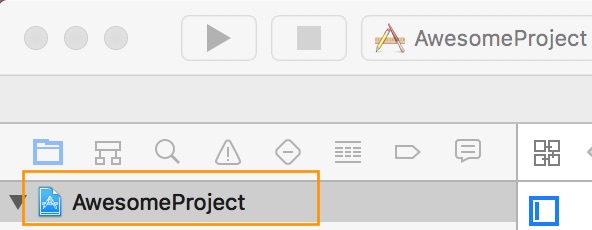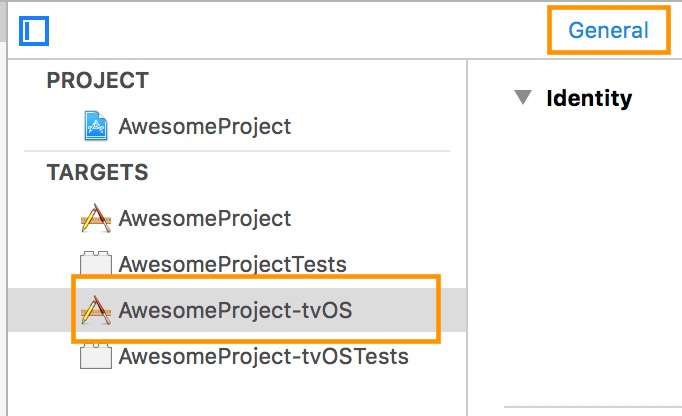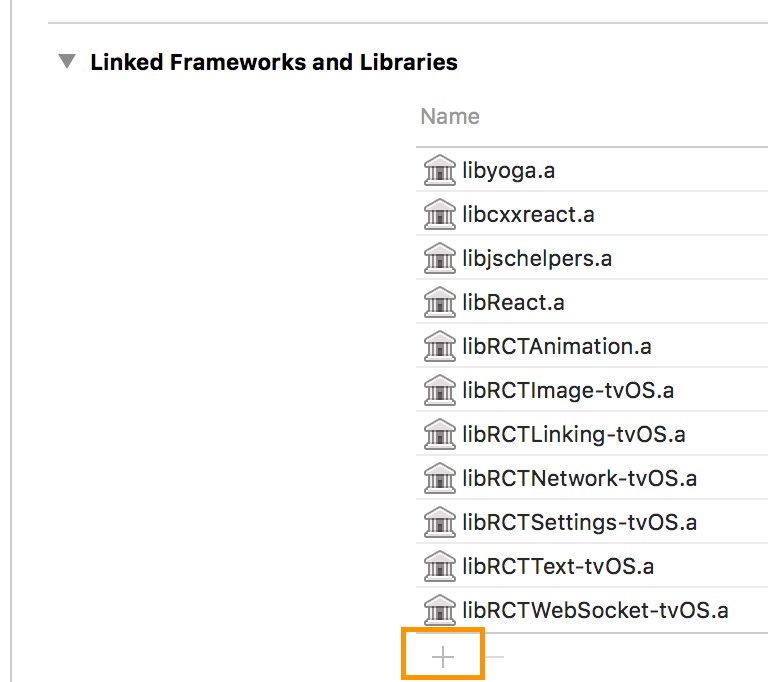## Table of Contents
* [Installation](#installation)
* [iOS](#ios-installation)
* [tvOS](#tvos-installation)
* [Android](#android-installation)
* [Windows](#windows-installation)
* [Examples](#examples)
* [iOS](#ios-example)
* [Android](#android-example)
* [Windows](#windows-example)
* [Usage](#usage)
* [iOS App Transport Security](#ios-app-transport-security)
* [Audio Mixing](#audio-mixing)
* [Android Expansion File Usage](#android-expansion-file-usage)
* [Updating](#updating)
* [Contributing](#contributing)
## Installation
Using npm:
```shell
npm install --save react-native-video
```
or using yarn:
```shell
yarn add react-native-video
```
Then follow the instructions for your platform to link react-native-video into your project:
### iOS installation
iOS details
#### Standard Method
**React Native 0.60 and above**
Run `npx pod-install`. Linking is not required in React Native 0.60 and above.
**React Native 0.59 and below**
Run `react-native link react-native-video` to link the react-native-video library.
#### Enable Static Linking for dependencies in your ios project Podfile
Add `use_frameworks! :linkage => :static` just under `platform :ios` in your ios project Podfile.
[See the example ios project for reference](examples/basic/ios/Podfile#L5)
#### Using CocoaPods (required to enable caching)
Setup your Podfile like it is described in the [react-native documentation](https://facebook.github.io/react-native/docs/integration-with-existing-apps#configuring-cocoapods-dependencies).
Depending on your requirements you have to choose between the two possible subpodspecs:
Video only:
```diff
pod 'Folly', :podspec => '../node_modules/react-native/third-party-podspecs/Folly.podspec'
+ `pod 'react-native-video', :path => '../node_modules/react-native-video/react-native-video.podspec'`
end
```
Video with caching ([more info](docs/caching.md)):
```diff
pod 'Folly', :podspec => '../node_modules/react-native/third-party-podspecs/Folly.podspec'
+ `pod 'react-native-video/VideoCaching', :path => '../node_modules/react-native-video/react-native-video.podspec'`
end
```
### tvOS installation
tvOS details
`react-native link react-native-video` doesn’t work properly with the tvOS target so we need to add the library manually.
First select your project in Xcode.
 After that, select the tvOS target of your application and select « General » tab
After that, select the tvOS target of your application and select « General » tab
 Scroll to « Linked Frameworks and Libraries » and tap on the + button
Scroll to « Linked Frameworks and Libraries » and tap on the + button
 Select RCTVideo-tvOS
Select RCTVideo-tvOS

### Android installation
Android details
Linking is not required in React Native 0.60 and above.
If your project is using React Native < 0.60, run `react-native link react-native-video` to link the react-native-video library.
Or if you have trouble, make the following additions to the given files manually:
#### **android/settings.gradle**
Add player source in build configuration
```gradle
include ':react-native-video'
project(':react-native-video').projectDir = new File(rootProject.projectDir, '../node_modules/react-native-video/android')
```
#### **android/app/build.gradle**
From version >= 5.0.0, you have to apply these changes:
```diff
dependencies {
...
compile project(':react-native-video')
+ implementation "androidx.appcompat:appcompat:1.0.0"
- implementation "com.android.support:appcompat-v7:${rootProject.ext.supportLibVersion}"
}
```
#### **android/gradle.properties**
Migrating to AndroidX (needs version >= 5.0.0):
```gradle.properties
android.useAndroidX=true
android.enableJetifier=true
```
#### **MainApplication.java**
If using com.facebook.react.PackageList to auto import native dependencies, there are no updates required here. Please see the android example project for more details.
/examples/basic/android/app/src/main/java/com/videoplayer/MainApplication.java
##### For manual linking
On top, where imports are:
```java
import com.brentvatne.react.ReactVideoPackage;
```
Add the `ReactVideoPackage` class to your list of exported packages.
```java
@Override
protected List getPackages() {
return Arrays.asList(
new MainReactPackage(),
new ReactVideoPackage()
);
}
```
### Windows installation
Windows RNW C++/WinRT details
#### Autolinking
**React Native Windows 0.63 and above**
Autolinking should automatically add react-native-video to your app.
#### Manual Linking
**React Native Windows 0.62**
Make the following additions to the given files manually:
##### **windows\myapp.sln**
Add the _ReactNativeVideoCPP_ project to your solution (eg. `windows\myapp.sln`):
1. Open your solution in Visual Studio 2019
2. Right-click Solution icon in Solution Explorer > Add > Existing Project...
3. Select `node_modules\react-native-video\windows\ReactNativeVideoCPP\ReactNativeVideoCPP.vcxproj`
##### **windows\myapp\myapp.vcxproj**
Add a reference to _ReactNativeVideoCPP_ to your main application project (eg. `windows\myapp\myapp.vcxproj`):
1. Open your solution in Visual Studio 2019
2. Right-click main application project > Add > Reference...
3. Check _ReactNativeVideoCPP_ from Solution Projects
##### **pch.h**
Add `#include "winrt/ReactNativeVideoCPP.h"`.
##### **app.cpp**
Add `PackageProviders().Append(winrt::ReactNativeVideoCPP::ReactPackageProvider());` before `InitializeComponent();`.
**React Native Windows 0.61 and below**
Follow the manual linking instuctions for React Native Windows 0.62 above, but substitute _ReactNativeVideoCPP61_ for _ReactNativeVideoCPP_.
## Examples
Run `yarn xbasic install` before running any of the examples.
### iOS Example
```
yarn xbasic ios
```
### Android Example
```
yarn xbasic android
```
### Windows Example
```
yarn xbasic windows
```
## Usage
```javascript
// Load the module
import Video from 'react-native-video';
// Within your render function, assuming you have a file called
// "background.mp4" in your project. You can include multiple videos
// on a single screen if you like.
### Audio Mixing
At some point in the future, react-native-video will include an Audio Manager for configuring how videos mix with other apps playing sounds on the device.
On iOS, if you would like to allow other apps to play music over your video component, make the following change:
**AppDelegate.m**
```objective-c
#import // import
- (BOOL)application:(UIApplication *)application didFinishLaunchingWithOptions:(NSDictionary *)launchOptions
{
...
[[AVAudioSession sharedInstance] setCategory:AVAudioSessionCategoryAmbient error:nil]; // allow
...
}
```
You can also use the [ignoreSilentSwitch](#ignoresilentswitch) prop.
### Android Expansion File Usage
Expansions files allow you to ship assets that exceed the 100MB apk size limit and don't need to be updated each time you push an app update.
This only supports mp4 files and they must not be compressed. Example command line for preventing compression:
```bash
zip -r -n .mp4 *.mp4 player.video.example.com
```
```javascript
// Within your render function, assuming you have a file called
// "background.mp4" in your expansion file. Just add your main and (if applicable) patch version
```
### Load files with the RN Asset System
The asset system [introduced in RN `0.14`](http://www.reactnative.com/react-native-v0-14-0-released/) allows loading image resources shared across iOS and Android without touching native code. As of RN `0.31` [the same is true](https://github.com/facebook/react-native/commit/91ff6868a554c4930fd5fda6ba8044dbd56c8374) of mp4 video assets for Android. As of [RN `0.33`](https://github.com/facebook/react-native/releases/tag/v0.33.0) iOS is also supported. Requires `react-native-video@0.9.0`.
```javascript
```
### Play in background on iOS
To enable audio to play in background on iOS the audio session needs to be set to `AVAudioSessionCategoryPlayback`. See [Apple documentation][3] for additional details. (NOTE: there is now a ticket to [expose this as a prop]( https://github.com/react-native-community/react-native-video/issues/310) )
## Examples
- See an [Example integration][1] in `react-native-login` *note that this example uses an older version of this library, before we used `export default` -- if you use `require` you will need to do `require('react-native-video').default` as per instructions above.*
- Try the included [VideoPlayer example][2] yourself:
```sh
git clone git@github.com:react-native-community/react-native-video.git
cd react-native-video/example
npm install
open ios/VideoPlayer.xcodeproj
```
Then `Cmd+R` to start the React Packager, build and run the project in the simulator.
- [Lumpen Radio](https://github.com/jhabdas/lumpen-radio) contains another example integration using local files and full screen background video.
## Updating
### Version 6.0.0
#### iOS
In your project Podfile add support for static dependency linking. This is required to support the new Promises subdependency in the iOS swift conversion.
Add `use_frameworks! :linkage => :static` just under `platform :ios` in your ios project Podfile.
[See the example ios project for reference](examples/basic/ios/Podfile#L5)
### Version 5.0.0
Probably you want to update your gradle version:
#### gradle-wrapper.properties
```diff
- distributionUrl=https\://services.gradle.org/distributions/gradle-3.3-all.zip
+ distributionUrl=https\://services.gradle.org/distributions/gradle-5.1.1-all.zip
```
#### **android/app/build.gradle**
From version >= 5.0.0, you have to apply this changes:
```diff
dependencies {
...
compile project(':react-native-video')
+ implementation "androidx.appcompat:appcompat:1.0.0"
- implementation "com.android.support:appcompat-v7:${rootProject.ext.supportLibVersion}"
}
```
#### **android/gradle.properties**
Migrating to AndroidX (needs version >= 5.0.0):
```gradle.properties
android.useAndroidX=true
android.enableJetifier=true
```
### Version 4.0.0
#### Gradle 3 and target SDK 26 requirement
In order to support ExoPlayer 2.9.0, you must use version 3 or higher of the Gradle plugin. This is included by default in React Native 0.57.
#### ExoPlayer 2.9.0 Java 1.8 requirement
ExoPlayer 2.9.0 uses some Java 1.8 features, so you may need to enable support for Java 1.8 in your app/build.gradle file. If you get an error, compiling with ExoPlayer like:
`Default interface methods are only supported starting with Android N (--min-api 24)`
Add the following to your app/build.gradle file:
```
android {
... // Various other settings go here
compileOptions {
targetCompatibility JavaVersion.VERSION_1_8
}
}
```
#### ExoPlayer no longer detaches
When using a router like the react-navigation TabNavigator, switching between tab routes would previously cause ExoPlayer to detach causing the video player to pause. We now don't detach the view, allowing the video to continue playing in a background tab. This matches the behavior for iOS.
#### useTextureView now defaults to true
The SurfaceView, which ExoPlayer has been using by default has a number of quirks that people are unaware of and often cause issues. This includes not supporting animations or scaling. It also causes strange behavior if you overlay two videos on top of each other, because the SurfaceView will [punch a hole](https://developer.android.com/reference/android/view/SurfaceView) through other views. Since TextureView doesn't have these issues and behaves in the way most developers expect, it makes sense to make it the default.
TextureView is not as fast as SurfaceView, so you may still want to enable SurfaceView support. To do this, you can set `useTextureView={false}`.
### Version 3.0.0
#### All platforms now auto-play
Previously, on Android ExoPlayer if the paused prop was not set, the media would not automatically start playing. The only way it would work was if you set `paused={false}`. This has been changed to automatically play if paused is not set so that the behavior is consistent across platforms.
#### All platforms now keep their paused state when returning from the background
Previously, on Android MediaPlayer if you setup an AppState event when the app went into the background and set a paused prop so that when you returned to the app the video would be paused it would be ignored.
Note, Windows does not have a concept of an app going into the background, so this doesn't apply there.
#### Use Android target SDK 27 by default
Version 3.0 updates the Android build tools and SDK to version 27. React Native is in the process of [switchting over](https://github.com/facebook/react-native/issues/18095#issuecomment-395596130) to SDK 27 in preparation for Google's requirement that new Android apps [use SDK 26](https://android-developers.googleblog.com/2017/12/improving-app-security-and-performance.html) by August 2018.
You will either need to install the version 27 SDK and version 27.0.3 buildtools or modify your build.gradle file to configure react-native-video to use the same build settings as the rest of your app as described below.
##### Using app build settings
You will need to create a `project.ext` section in the top-level build.gradle file (not app/build.gradle). Fill in the values from the example below using the values found in your app/build.gradle file.
```
// Top-level build file where you can add configuration options common to all sub-projects/modules.
buildscript {
... // Various other settings go here
}
allprojects {
... // Various other settings go here
project.ext {
compileSdkVersion = 31
buildToolsVersion = "30.0.2"
minSdkVersion = 21
targetSdkVersion = 22
}
}
```
If you encounter an error `Could not find com.android.support:support-annotations:27.0.0.` reinstall your Android Support Repository.
## Black Screen on Release build (Android)
If your video work on Debug mode, but on Release you see only black screen, please, check the link to your video. If you use 'http' protocol there, you will need to add next string to your AndroidManifest.xml file.
```
```
 After that, select the tvOS target of your application and select « General » tab
After that, select the tvOS target of your application and select « General » tab
 Scroll to « Linked Frameworks and Libraries » and tap on the + button
Scroll to « Linked Frameworks and Libraries » and tap on the + button
 Select RCTVideo-tvOS
Select RCTVideo-tvOS
